Five conversations that will enable our organisations to become positive communities of purpose
AI+CF: Using the power of affirmative enquiry and the potential of the congruence framework to discover, dream, design and deliver congruent organisations and communities
I am continually surprised by what I don’t know and sometimes frustrated that an important and enlightening field of learning has somehow evaded my attention. Recently, two unrelated responses to my posts ‘unfolding futures‘ and ‘enabling leadership‘ caused me to pay much closer attention to the field of Appreciative Inquiry (‘AI’), loosely defined as ‘the study of what gives life to human systems when they function at their best’.
AI, which has its roots in positive psychology (Martin Seligman et al), presents a well-proven approach for enabling positive change. Practitioners use a four-step cyclical process – Discovery (what will be), Dream (what could be), Design (what should be), and Destiny (what will be) – to enable conversations that engage participants in the co-creation of their positive future.
But what interests me most are the principles that underpin AI, eight ‘common-sense’ reasons (things I/we ‘know’ to be true) why an AI approach to change works:
- Words create worlds (the constructionist principle) – ‘Meaning is made in conversations, reality is created in communications and knowledge is generated through social interaction’;
- Inquiry creates change (the simultaneity principle) – ‘Change occurs the moment we ask the question.’
- We can choose what we study (the poetic principle) – ‘The topics we choose to study are fateful. They not only determine what we discover and learn – they actually create it.’
- Images inspire action (the anticipatory principle) – ‘…images of the future guide and inspire present-day actions and achievements.’
- Positive questions lead to positive change (the positive principle) – ‘Positive questions bring out the best in people, inspire positive actions and create possibilities for positive futures.’
- Wholeness brings out the best (the wholeness principle) – ‘The experience of wholeness is one of understanding the whole story. It comes about when people are able to hear, witness and make sense of each other’s differing views, perspectives and interpretations of shared events’
- Acting ‘as-if’ is self fulfilling (the enactment principle) – ‘…transformation occurs by living in the present what we most desire for the future.’
- Free choice liberates power (the free-choice principle) – ‘…people and organisations thrive when people are able to choose the nature and extent of their contribution.’
My excitement at this rather belated discovery of AI was recognising the potential to use its four-step (4D) process to implement the The Congruence Framework (‘CF’). AI and CF share a belief that positive change is enabled by community and/or organisational conversations that are framed by the ‘right’ questions grounded in an ‘affirmative purpose’. Hence the opportunity to use AI methodologies to deploy CF, to use
CF was designed as an organising or thinking framework that could be applied to any individual, organisation or community that wanted to pursue congruence – the harmonious alignment of one’s own ‘self’ or of ourselves as individual and collective ‘actors’ within our communities and organisations.
CF was also proposed as a way of helping organisations and communities to build operating models that would enable and encourage congruence with and within their stakeholder communities. CF was never intended to be a particular solution in itself, but rather a flexible way of framing (thinking about) a solution. It relies on purposeful community conversations about the critical factors for congruence to admit an appropriate organisational or community context and to generate a set of outcomes that move the organisation towards congruence.
Linking AI+CF presents an opportunity is to implement an organisational or community agenda for congruence by adopting an AI approach; to facilitate ‘four-step’ conversations that focus on each of the five CF factors – purpose and leadership, people and community, potential and learning, participation and contribution, and wellbeing and sustainability. By choosing ‘what to study’ (the poetic principle) and employing the AI process (Discover – Dream – Design – Destiny) we can guide those conversations towards a positive future, a congruent future where people are ‘harmoniously aligned’ with and within their organisations and communities. The questions that follow are intended to frame the possibility agendas for our five AI+CF conversations :
CONVERSATION ONE: Purpose and Leadership
What is the HOPE we share with our organisational community?
What is the purpose that we proudly share with our stakeholders?
What are our ambitions for the future? What excites us about our future together?
How could we share the leadership of our organisation?
There is increasing evidence that a truly shared organisational purpose excites, energises and enables an organisational community to achieve extraordinary outcomes. And, where the organisation’s ambition for the future represents a genuine manifestation of its shared purpose, it can engage its whole stakeholder community to co-create a shared future that generates fair value for all. But these outcomes are not possible without enabling leadership, leadership that is based on service to others and shares its responsibilities and accountabilities with its community. Unfortunately, hierarchical command and control leadership, which disables purposeful communities, still dominates our corporate and civic organisations.
CONVERSATION TWO: People and Community
How can our organisation be a better COMMUNITY?
How can we build meaningful relationships that really connect us and bring us together as a community?
How can we build strong, positive and flexible networks and alliances that enable us to be an agile and resilient organisational community?
Relationships that work are based on commonality and mutuality – they share a deep common interest and consistently generate mutual value (however defined) for the participants. These meaningful relationships are the foundation of congruent communities. They enable genuine collaborations and productive community alliances and partnerships; they provide the trusted connections that secure flexible and resilient community networks; and they facilitate community learning by integrating community difference and diversity. Meaningful relationships are developed through successful conversations – conversations which enter into dialogue about a common interest and co-create outcomes that represent equitable value for all participants.
CONVERSATION THREE: Potential and Learning
How can we LEARN more as a community?
How can we know and embrace the difference and diversity within our community?
How can we benefit from the collective knowledge and wisdom of our whole organisational community?
The sustainability of any community depends on its capacity to adapt to shifts in its operating environment. Communities not only need the resilience to accommodate disruptive change and the agility to make an appropriate and timely change response, they also need the ability to make the best response – the ability to learn as a community. Collaborative learning provides the opportunity for purposeful communities to engage the full spectrum of community knowledge, wisdom and know-how in order to ‘discover, dream, design and deliver’ opportunities for positive change – opportunities for appreciative learning as a community. It is through community (collaborative) learning that organisations can achieve the positive integration of community difference, diversity and dissent and thus sustain their congruence. And, by engaging the whole organisational community in learning together, the many opportunities for positive change that only occur at the ‘edges and interfaces’ of an organisation, become part of the learning dialogue.
CONVERSATION FOUR: Participation and Contribution
How can we best CONTRIBUTE to our societal community?
Is what we do the best reflection of who we are?
How does what we do make our world a better place?
How does our participation in our society add value for all of our stakeholders?
The evidence suggests that organisations that focus on adding value for all of their stakeholder communities are more likely to be sustainable in the longer-term. Taking care of all stakeholders means sustaining an organisational agenda that enables the co-creation of equitable-shared value for all stakeholder communities. This means understanding and valuing all stakeholders – appreciating why they value ‘belonging’, respecting their integrity, independence and interdependence, appreciating their potential to contribute, and providing meaningful opportunities for their participation. Valuing the public stakeholder within this community means behaving as a ‘good corporate citizen’ within our societal community – working with that community to ensure that our contribution is valuable (and valued), that it ‘makes our world a better place’.
CONVERSATION FIVE: Wellbeing and Sustainability
How can we best CARE for our people?
How can we enhance the wellbeing of our organisational community?
How can we help to create a sustainable future for all of our stakeholders?
Sustainable organisations understand that their longer-term future depends on maintaining the engagement of their stakeholder communities. They know that on-going productive engagement is not simply an outcome of providing economic benefits. Enduring engagement requires the delivery of a range of outcomes that also address the spiritual, social, cultural intellectual and environmental needs of their people. These organisations also understand that their sustainability is dependent on their resilience, the capacity of their people to adapt to change (their resilience), which cannot be assured if their people are ‘unwell’. That’s why they assume a collaborative responsibility for enhancing the wellbeing of their stakeholder communities. That’s why they build community (social wellbeing) around a shared purpose (‘spiritual’ wellbeing); foster collaborative learning (intellectual and emotional wellbeing) to integrate difference and diversity (cultural wellbeing); ensure a safe and enabling working environment (occupational wellbeing); and encourage their people to be healthy (situational wellbeing).
For more about the possibilities of AI+CF please refer to the following books referenced in this post – The Congruence Framework and The Power of Appreciative Inquiry

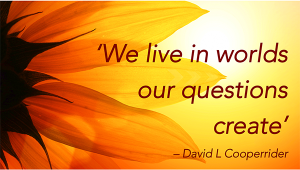
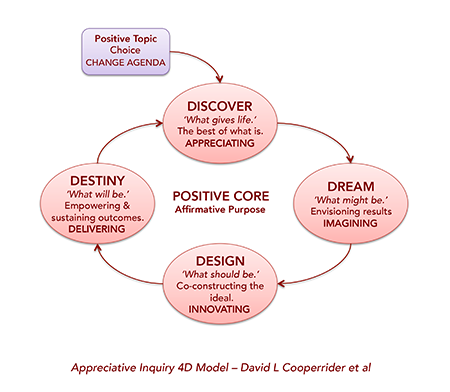
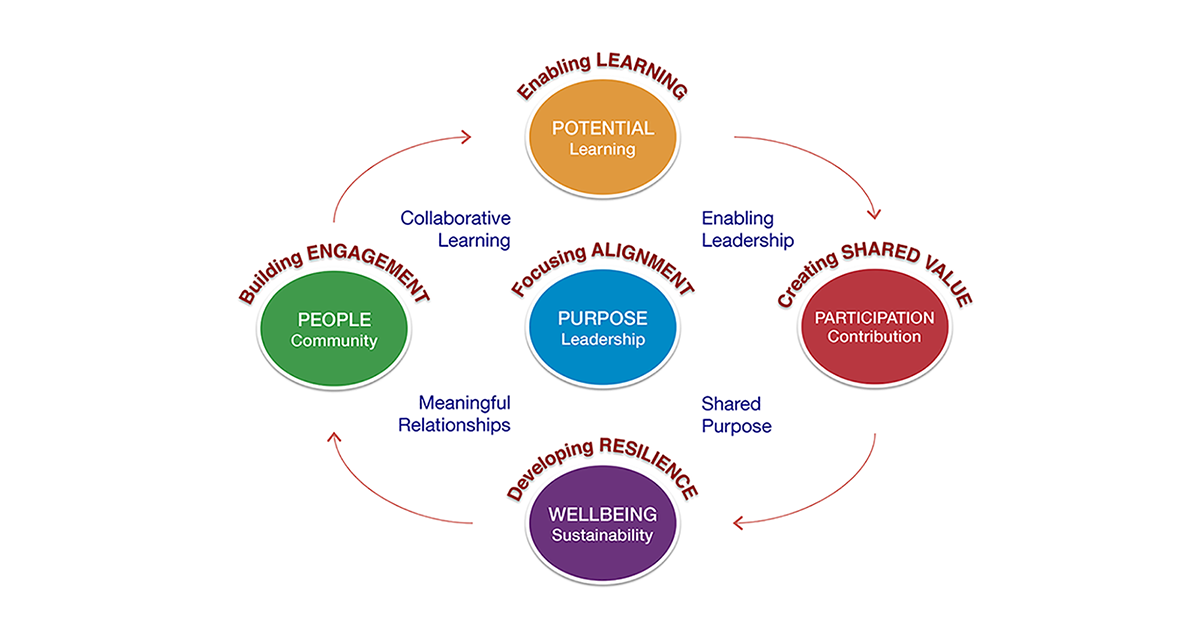
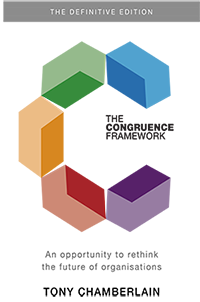
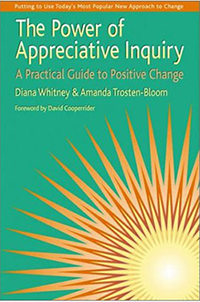
Leave A Comment